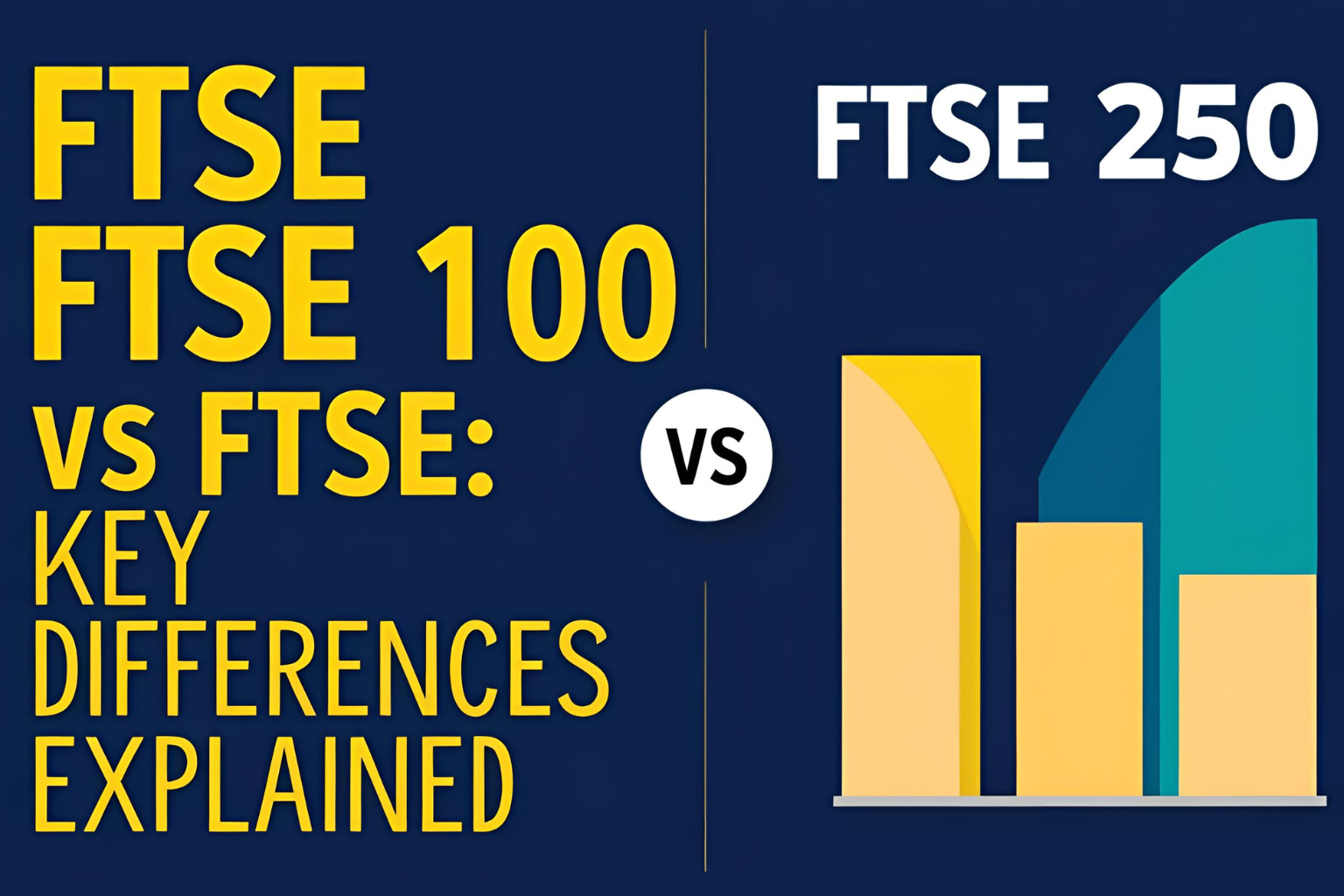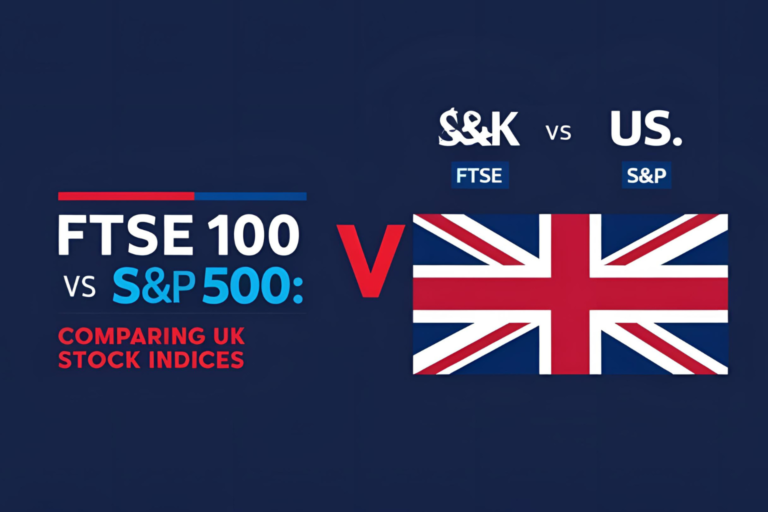FTSE 100 vs FTSE 250: Key Differences Explained
Introduction:
The FTSE 100 and FTSE 250 are two of the most followed indices on the London Stock Exchange, but they represent very different sets of companies. While both are important for investors, understanding the key differences between the FTSE 100 and FTSE 250 can help you make smarter portfolio decisions.
What Is the FTSE 100?
The FTSE 100 includes the largest 100 companies listed on the London Stock Exchange by market capitalization. These companies are typically:
- Global in scope
- Highly capitalized
- Often pay dividends
Examples: Shell, HSBC, AstraZeneca, Unilever
What Is the FTSE 250?
The FTSE 250 consists of the next 250 largest companies—those ranked 101st to 350th in market cap. These are generally:
- Mid-cap companies
- More UK-focused
- Faster-growing but more volatile
Examples: Greggs, AO World, WH Smith, Carnival
Key Differences Between FTSE 100 and FTSE 250
| Feature | FTSE 100 | FTSE 250 |
|---|---|---|
| Company Size | Large-cap | Mid-cap |
| Geographic Focus | International revenues | Mostly UK-based |
| Growth Potential | Lower but stable | Higher potential, more volatility |
| Dividend Yield | Usually higher | Varies, often lower |
| Risk Level | Lower volatility | Higher volatility |
| Economic Sensitivity | Less sensitive to UK events | More sensitive to domestic economy |
Performance Comparison
Historically, the FTSE 250 has outperformed the FTSE 100 in total return over the long term due to faster growth. However, it’s also more sensitive to UK-specific events like policy changes, inflation, and currency strength.
The FTSE 100, on the other hand:
- Is seen as a safe haven during global uncertainty.
- Is less affected by the UK economy due to global exposure.
Which One Should You Choose?
- Choose the FTSE 100 if you want:
- Global exposure
- Lower volatility
- Stable dividend income
- Choose the FTSE 250 if you prefer:
- UK-focused investments
- Higher growth potential
- Greater risk tolerance
Many investors choose to diversify across both for balanced exposure.
Conclusion
While the FTSE 100 represents large multinational giants, the FTSE 250 offers opportunities in the mid-cap space with higher potential returns—but also greater risks. Your choice depends on your investment goals, risk appetite, and interest in global vs domestic exposure.
FAQs
1. Is the FTSE 250 riskier than the FTSE 100?
Yes. The FTSE 250 includes smaller, more volatile companies and is more exposed to UK economic changes.
2. Which index pays more dividends?
Generally, the FTSE 100 has a higher dividend yield, with mature companies offering regular payouts.
3. Can I invest in both indices?
Yes. Many funds and ETFs track both the FTSE 100 and FTSE 250, allowing for diversified exposure.
4. Which is better for long-term growth?
Historically, the FTSE 250 has outperformed the FTSE 100 in total return, but with higher volatility.
5. Are FTSE 100 companies more stable?
Yes. These are large-cap firms with global operations, making them relatively more stable than mid-caps.


